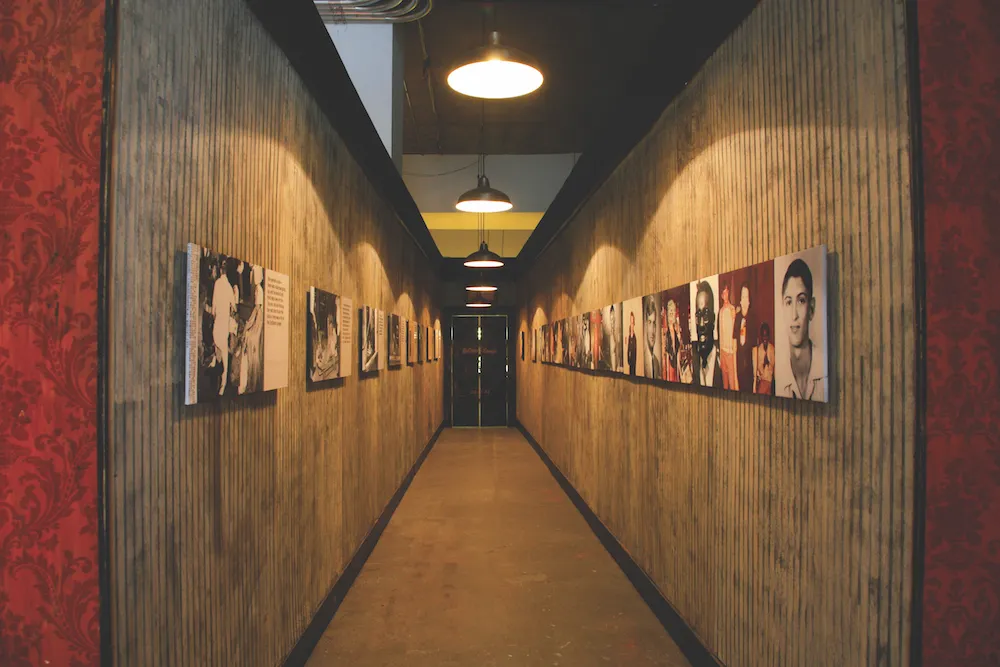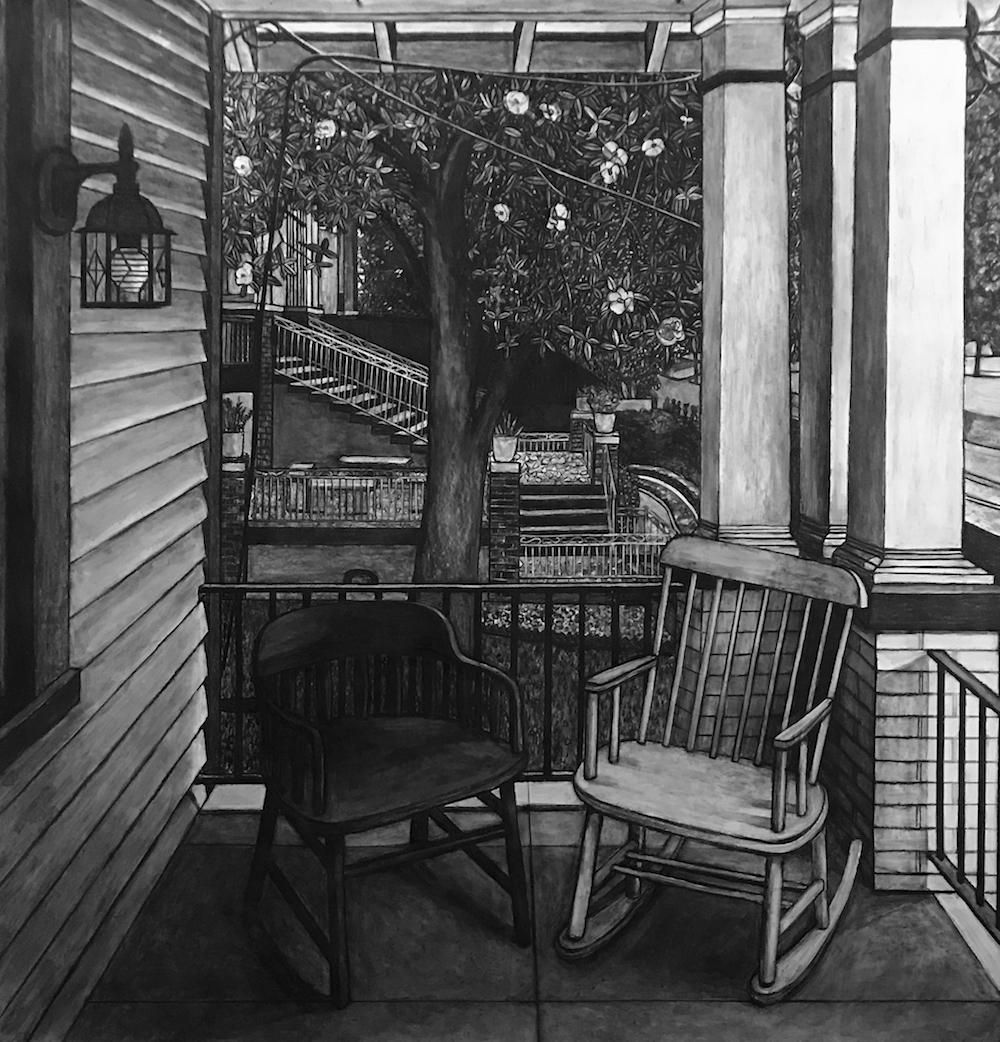Seven Artists Explore New Orleans’ Forgotten Histories
A new exhibit timed to the city’s tricentennial explores The Big Easy’s diverse and sometimes troubled past
:focal(423x147:424x148)/https://tf-cmsv2-smithsonianmag-media.s3.amazonaws.com/filer/e2/31/e231d032-7f08-4514-bc12-393b3bfe22b2/kasimu_harris_war_on_the_benighted_1.jpg)
The city of New Orleans has a colorful history that spans multiple centuries—yet, many new visitors' historical points of reference revolve only around Bourbon Street or the devastation caused by Hurricane Katrina. In an effort to shed new light on the city’s past, while also celebrating its tricentennial, the New Orleans Museum of Art (NOMA) is launching a new exhibition this summer titled, “Changing Course: Reflections on New Orleans Histories.”
From June 29 through September 16, the multi-artist exhibition focuses on “forgotten or marginalized histories of the city” and recognizes the people and events that helped to weave the social fabric that makes New Orleans the city that it is today. For the exhibition, a team of curators tapped seven artists—all of whom either live in or have a connection to the city—with the intent of having them create contemporary art projects that highlight the city’s past while also looking to its future.
“We started working a year ago to conceptualize and put together an exhibit that’s geared toward the city’s tricentennial, but also provides some new ways of thinking about it,” Brian Piper, the Andrew W. Mellon Curatorial Fellow for Photography at NOMA, tells Smithsonian.com. “We really leaned into this idea that New Orleans is a city of multiple histories that are in some ways discreet, but they’re all connected. We also wanted to include a number of voices and communities from the past that have either been forgotten or marginalized from the mainstream historical narrative of the city. We’re interested in getting these histories into the museum and using NOMA as an institution to boost their signal and remind ourselves that all of these histories—some of which are difficult to think about and painful to remember—need to be part of the tricentennial story too.”
Piper and his co-curators looked to NOMA’s vast collection for inspiration, tapping into its permanent collection as well as bringing in new pieces that will make their debut.
The exhibition begins in the museum’s Great Hall with a photo series titled “War on the Benighted” by L. Kasimu Harris, a New Orleans-based photographer and writer, that shows powerful imagery of black students in local schools and provides a narrative about education and race.
“It’s what we’re calling a ‘constructed reality photo series’, where [Harris] imagines a revolution in the classroom [in which] a group of young African-American students are taking control of their own education,” Piper says. “It’s a non-linear narrative that asks viewers to imagine a story around them and is an example [of one of the art projects] that points our attention to contemporary debates, in particular about New Orleans’ schools, education policy and the affect they have on [current students]. It also references a longer history of struggle over public schools in New Orleans, and the efforts of African-Americans to secure a quality [education here].”
Piper says that for a brief moment in the 1870s during Reconstruction, New Orleans public schools were integrated, and thus serve as a perfect example of the city’s surprising history that many people may not be aware of.
“During Reconstruction, there was a large and active African-American community here,” he adds. “Prior to the Civil War, slavery existed in New Orleans, but there was also a community of free people of color and education was very important to them, so they basically hit the ground running in terms of activism in the 1870s and got the schools integrated … [They] were able to do so without the federal government for a few years. But then when Reconstruction ended the powers that be re-segregated the public schools.”
In addition to education, other important topics that artists tackle include the 1973 arson at the Upstairs Lounge, a popular gay bar in the French Quarter, and its relation to the ongoing violence against the LGBTQ community today (“Remember the Upstairs Lounge” by Skylar Fein), and an installation of woodblock prints by Katrina Andry that questions urban development after Hurricane Katrina, and its impact on certain marginalized groups that have lived in those neighborhoods.
/https://tf-cmsv2-smithsonianmag-media.s3.amazonaws.com/filer/c2/cf/c2cfab84-9926-45b9-b821-98b6086454a4/katrina_andry_congratulations_you_made_it_copy.jpg)
“Andry’s piece deals somewhat with ongoing issues around gentrification, urban planning and historical preservation after [Hurricane Katrina],” he says. “The neighborhood demographics have changed a lot, and affordable housing has been an issue, and with it the erasure and disenfranchisement of historically African-American parts of the city… [Andry] is challenging this idea of ‘beautiful decay.’ Often, we get a romantic vision of New Orleans as a place where overgrown vegetation and crumbling architectural infrastructure are very attractive and make New Orleans what it is, but she’s pointing us to the idea that there is a real human toll that hides behind that.”
Piper co-curated the exhibit alongside Russell Lord, Freeman Family Curator of Photographs, Prints, and Drawings; Katie Pfohl, Curator of Modern and Contemporary Art; and Allison Young, the Andrew W. Mellon Curatorial Fellow for Modern and Contemporary Art. Other artists featured include The Propeller Group, Lesley Dill, Willie Birch and The Everyday Projects.
“Changing Course: Reflections on New Orleans Histories” runs through September 16.
/https://tf-cmsv2-smithsonianmag-media.s3.amazonaws.com/filer/7e/fa/7efa3b30-c756-4a40-a424-8e44e0b3d557/lesley_dill_arthur_roger_2.jpg)

